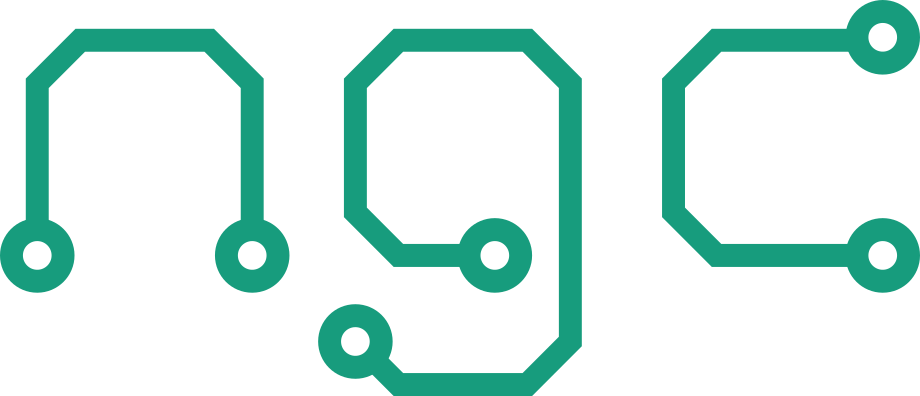Photons
Photons are elementary quantum particles without charge and rest mass that make up electromagnetic radiation (light, micro waves, radio waves etc.). The larger their energy, the smaller the wavelength. Photons are always moving with speed of light, which is modified when passing through matter.
General features
- low transport losses, i.e. low energy consumption and heat dissipation
- fastest transport of information (speed of light)
- large wavelength compared to electron, i.e. device size of 1000 nm vs. <10 nm
- no photon-photon interaction, unless mediated by matter
Variables of photons / light signals for carrying information
- frequency / wavelength / photon energy
- amplitude / photon number
- phase / delay time
- pulse and pause time (on/off)
- polarization / angular momentum
Plasmons
Plasmons are quasi-particels resulting from oscillations of a collective cloud of electrons, the charge density. This collective movement can be initiated by the interaction of light or other electromagnetic waves with the free electrons of a material, causing the electrons to collectively vibrate. The created waves of electrons move through the material or on its surface, similar to how sound waves move through air. The following list corresponds to attempts in using surface plasmons or localized surface plasmons for computations, which in combination with the photon causing the excitation is a –> polariton.
General features
- oscillation of charge with same frequencies (~100 THz) but smaller wavelength compared to light
- intermediate size of devices possible (between 10 nm and 1000 nm)
- generation by single photon possible
- coherent phase with exciting light
- strong linear interactions between plasmons
- propagation as waves
- non-linear modulation by light and electric signals possible
- only proof of concept for single circuits on laboratory level
Variables of plasmons for carrying information
- phase
- frequency
- polarization
- localization
Polariton
Polaritons are quasi-particles that arise from the strong coupling of photons with polarizable matter. When photons interact with matter, a phenomenon called “level repulsion”, also called “avoided crossing” appears, which states that a crossing of the dispersion of the incoming light and (quasi-)particles of the solid has to be avoided by the creation of a new quasi-particle called polariton. Thus, the nature of polaritons, e. g. if they behave as bosons or fermions, depends on the nature of the (quasi-)particle it originates from. For example, they can always arise from the coupling of photons with phonons, while only in a semiconductor, polaritons can be formed from the strong coupling of photons with excitons or plasmons. As they are hybrid states that combine features of both light and matter, and can exhibit properties of both, such as a finite mass and a long lifetime.
Due to the diversity of their constituents we do not provide a list of their features and variables in the following.
General features
Variables of plasmons for carrying information
Further reading
| Title | Author | Year |
| Plasmonic circuits for manipulating optical information | T. J. Davis, D. E. Gómez, A. Roberts | 2016 |
